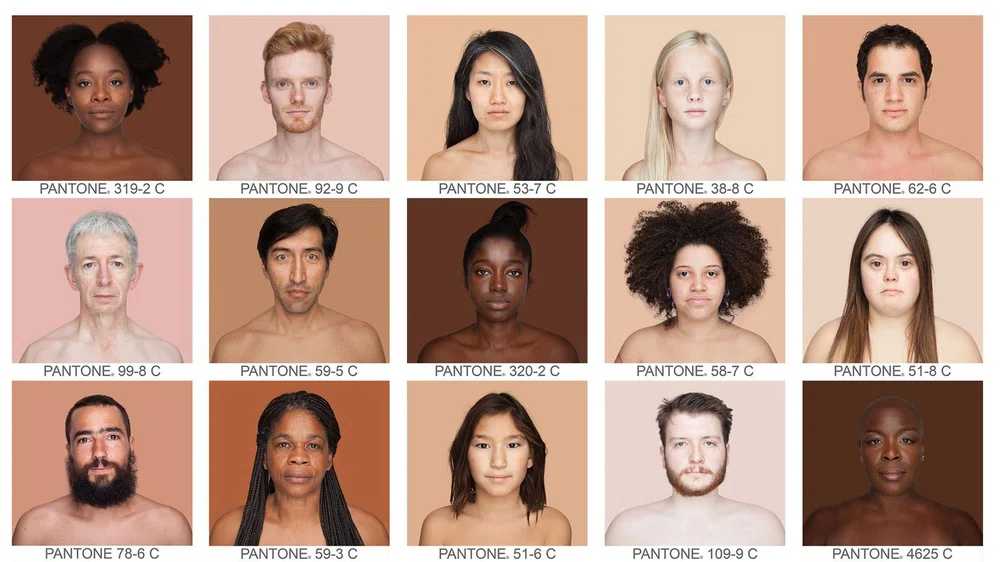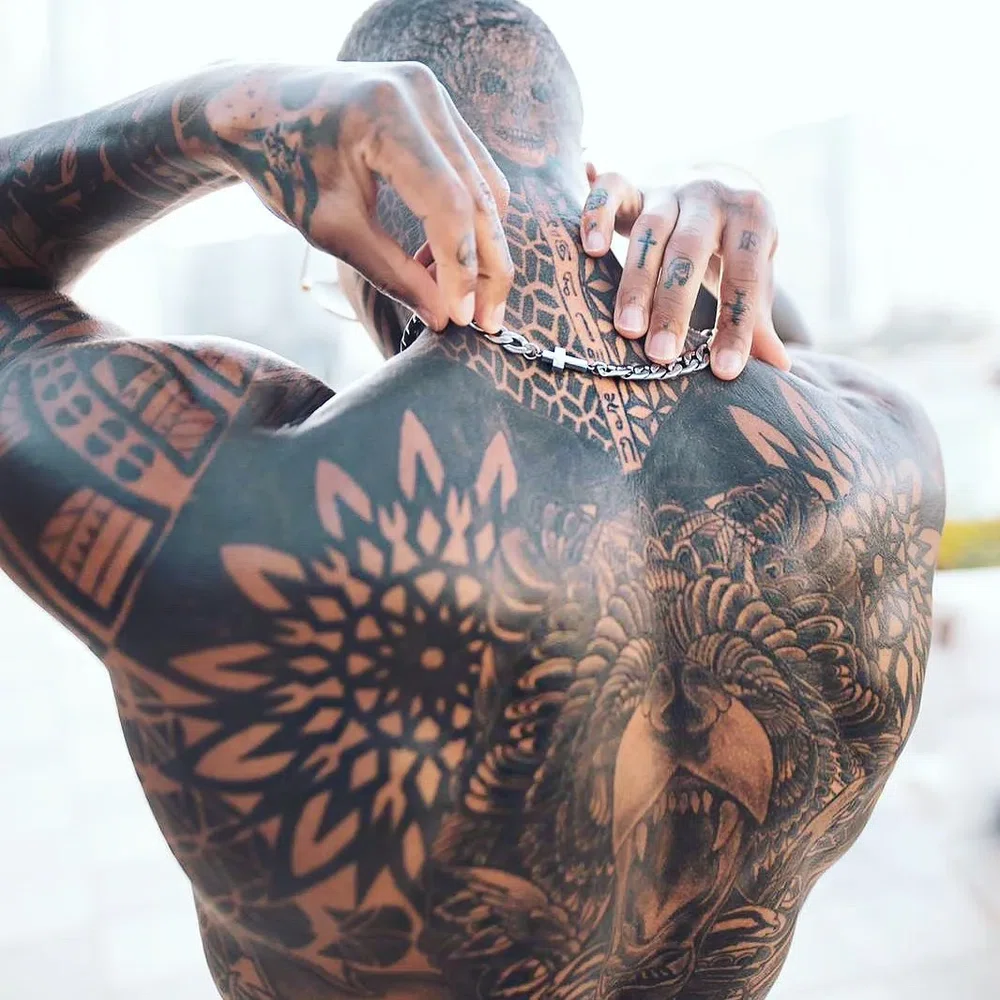How do the inks behave on different skins?
Pigment transformations in different skin tones
27 April 2023
When it comes to tattooing, it is crucial to consider the skin tones of your clients.
Each individual has a unique combination of pigments and shades, which can even vary within different areas of their body. The concept of “skin colour” encompasses a vast spectrum of hues.
This diversity has a significant impact on the tattooing process. As the skin is not a blank canvas, it affects the behaviour of tattoo inks and the techniques and styles used for each tattoo.
To delve deeper into this topic, let us explore the intricacies of skin tone and its influence on tattooing.
Differences in skin and tones, what do you have to know?
As we expected, there is no single universal colour for our skin. Various shades exist, each determined by the amount of melanin in an individual's DNA. Melanin is a biological compound found in the skin, hair, eyes, and other body parts that provide colour and protects us from the sun's harmful rays.
Skin with more melanin will be darker, have better light-absorbing capabilities, and be more resistant to ultraviolet rays. Conversely, lighter skin has less melanin and is much more vulnerable to solar radiation.
In broad terms, we can categorize skin into two types: dark skin and light skin. Within these two groups, there are several shades. Currently, a study has classified six types of skin based on the phototype, which is the term used to describe the resistance capacity of each skin type to sunlight.
This is how they are defined:
- "Milky", pink and freckled skin, common in redheads.
- Pale, common in blondes.
- Light skin, common in various people.
- Light brown skin, with a tendency to develop freckles.
- Dark brown skin.
- Very dark and almost purple skin.
From this distinction, you can notice that tattooing on one skin or another is an entirely different experience. We’ll tell you why.

Project by Angelica Dass
Tattooing dark skin vs. light skin
The techniques used to work on dark or light skin are not the same, and the range of colours that look best in each case is different.
In fair skin tones are more easily distinguished, and the range of colours is vast. But when it comes to dark skin, the situation changes a lot.
Some believe that, by having more melanin, dark skin tends to be more fibrous, smoother and, therefore, a little tougher.
Of course, this always, absolutely always, depends on each person, the care they have, the type of hydration, etc.
But in some cases, this type of leather may require special care when pricking. Many recommend tattooing a little slower, so the needles can penetrate better and thus fix the inks.
On the other hand, as with the sun's rays, dark skin can give the impression that they absorb much more pigment and, therefore, tend to dull the colours, lowering their luminance and saturation.

Many believe that on dark skin, white inks can stand out much more than on light skin due to the game of contrasts generated between the two. But this is not entirely true.
In darker skin, very light colours do not stand out as much or resist the passage of time in the same way, which is when doubts arise.
The million-dollar question is always, what colours should I use to tattoo on dark skin?
The answer is ambiguous. The reality is that everyone will tattoo what they want, and that's perfect, but remember that not all colours can look their best on one skin or another.
Tattoos on dark skin often require more pigment for the colours to be visible, while light skin may require less pigment.
For dark skin, many tattoo artists recommend working with strong, intense, highly saturated colours that stand out above the client's skin tone.
It is critical to use pure inks in basic colours such as navy blue, red and bright types of green. Ideal are medium tones, neither too dark nor too light, avoiding pastel colours.
The most chosen and recommended ink for dark skin is black ink.
For this reason, works in the Blackwork style are usually excellent for this type of skin because they work with very high contrasts and are usually less detailed than others.
For example, some believe that styles such as Realism are not typically the ones indicated because when they are done based on shading and not very defined lines, eventually, they end up disappearing.
That is why tattooing with techniques and styles that ensure strong and powerful strokes is best. If you want to know more, enter here, and we will tell you everything about The Blackwork style and the trend towards total black.
Moreover, another tip from some tattoo artists is to think about the design only in two planes: figure and background.
That is, without adding intermediate planes or too many details.
To achieve this, they recommend placing the darkest and shadow tones behind (background) and the brightest tones in front and in the foreground (figure). In this way, you achieve a good contrast and make the lighting stand out and attract more attention.
On the other hand, although it is not something exclusive of dark skins, it is very useful to avoid very small tattoos, since over time all tattoos tend to expand a bit. Still, when dealing with darker skin, they may end up being illegible.
Mastering colours
As we told you in the article The chromatic circle and its importance in colour tattoos, learning about colourimetry is essential for any artist, it is almost as important as knowing how to use your machines.
We can define colourimetry as the science that studies the behavior of colours in their different combinations and light situations, and how they are perceived visually.
In tattoo terms, this refers to how the inks look once injected and what changes they undergo depending on the pigmentation of each skin.
In summary, knowing how to master colours is not an easy, and tattooing on light or dark skin radically determines your work, from colours to design and style.
That is why you must have a good study based on colourimetry and colour theory to conduct an analytical and careful reading before tattooing.
So, planning is key.
Carrying out a previous study of composition and colourimetry is essential in this type of work. Otherwise, you will get fully involved in working on a design you will not know how to master later.
That is why we recommend that you study this subject in depth, but above all, you practice a lot to find your own techniques and discover first-hand all the difficulties and obstacles you may encounter.
If you are keen to learn more about tattooing and specialize, click here and Learn how tattoo like a professional with us. We can help each other.